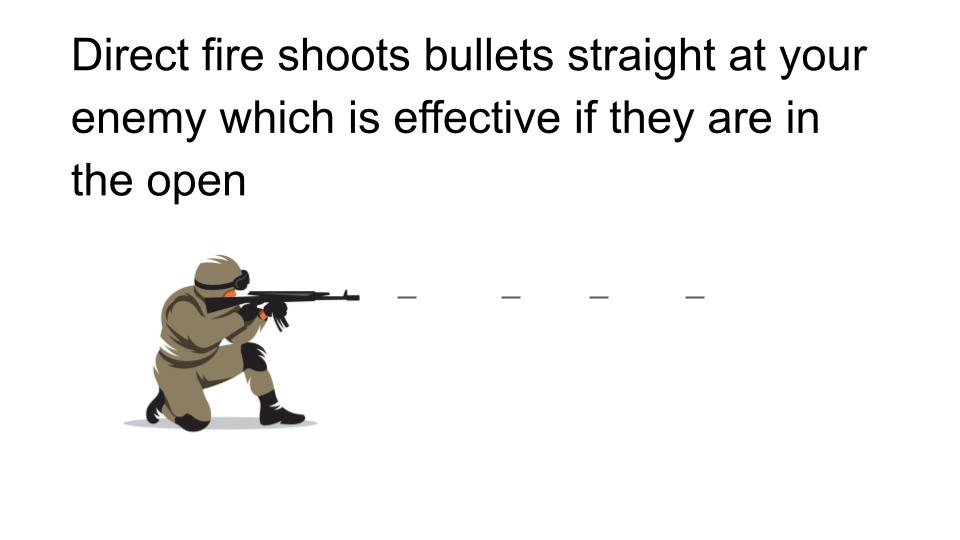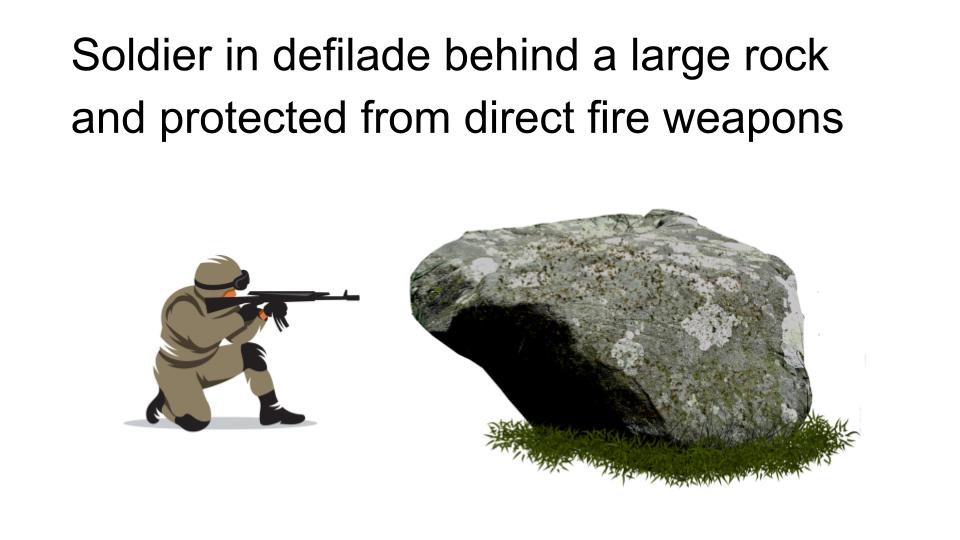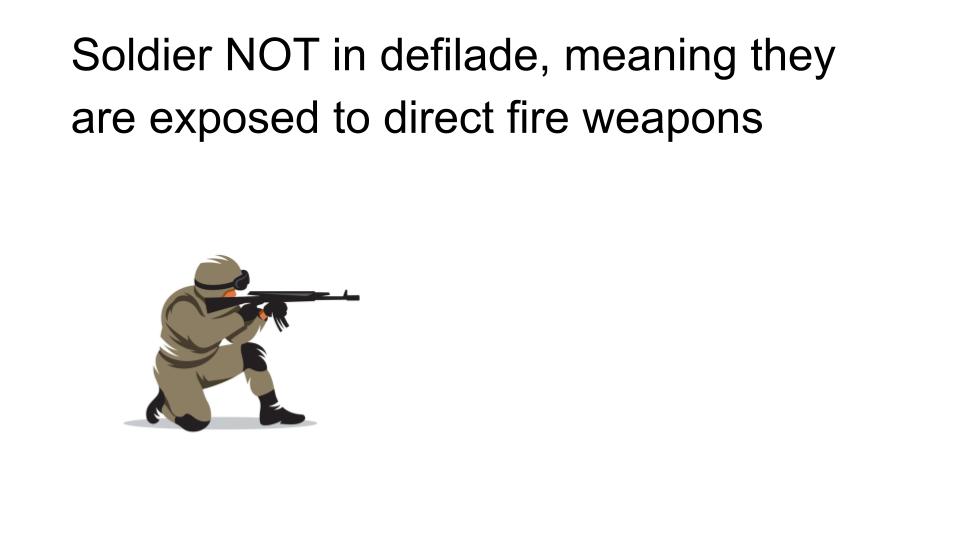Summary:
-
A Combined Arms Dilemma puts your competition into a bind where they have no good choices
-
You can do this by finding the two most important areas where you compete and pressuring those hard to force your competition’s hand.
WAR
Imagine that you’re a newly recruited German soldier in WWI. You just rode a train for days to get to the western front. After a couple of weeks in the trench, you realize that your feet are constantly soaking wet and you barely get anything to eat. When you get an opportunity to sleep, it’s in a small dugout in the trench.
At dawn on a Saturday morning, huge artillery explosions start landing all around you. The explosions are the loudest things that you’ve ever heard. The dirt and mud rains down on you after every blast. You see other soldiers further down the trench take a direct hit by a shell, tearing their bodies to shreds. You dive into the deepest part of the trench. You feel like you’re laying there for hours waiting for the explosions to stop. They eventually start to slow down and then stop.
Right when they stop, heavy machine gun fire starts ripping right over your head just above the lip of the trench. You don’t dare lift your head above the trench. However, you know that the Americans are attacking. You hear the shouts and gun fire getting closer. The bullets are still very heavy above your head and you don’t think that you can shoot back. Two enemy hand grenades then land in the trench right next to you. You have nowhere to go, so you jump out of the trench to avoid the blasts. As you climb the trench, one of the hand grenades explodes behind you peppering you with hot metal fragments. You stumble but keep climbing to avoid the second grenade. As you reach the crest of the trench, the horizon starts to open up. You see a US Marine 50 yards away, with his rifle fixed on you. You see his muzzle flash as he fires. You’re now on your back looking up at the blue skies above Belleau Wood, France, taking your last breaths.
That is an example of a ‘combined arms dilemma,’ which is putting your enemy into a no-win situation. The Marine Corps infantry is constructed from the ground up to put our enemy in this exact dilemma. You either die from a bomb hiding behind cover or come out of cover and die from a bullet.
A few important concepts are direct and indirect weapons and the concept of defilade.
What is a direct and indirect fire weapon?
At the highest level, there are two types of military weapon systems:
Direct fire – rifles and machine guns. These weapons fire bullets ‘directly’ at the enemy.
- To affect the enemy with direct fire weapons, you have to be fairly close to them, within a couple thousand meters, and be exposed to them. This means that if you shoot them, they can shoot you.
- A rare exception is that you can actually arch machine gun fire over small hills and have it impact the enemy.

Indirect fire – air, artillery, rockets, mortars and grenades. These drop bombs ‘indirectly’ on the enemy.
- The most important aspect of indirect fire is that it can affect the enemy when they are hiding in defilade. This means that they are behind something that stops bullets and the bomb comes down on them or is thrown into where they are.
- You can be much further away when shooting indirect fire.
- Indirect fire is much less available and usually must be authorized by a higher command.

What is defilade?
Also at the highest level, an individual enemy soldier has two things they could be doing:
The enemy can be in defilade – meaning they are hiding behind something that stops direct fire weapons (bullets) from hitting them. This is closely related to “cover”.
- If a person is behind a hill, a wall, a tree, or a bunker, then they are in defilade.
- In defilade, they are only susceptible to indirect fire weapons (bombs).
- When they are in defilade they usually can’t be or aren’t shooting back. This makes them less of a threat to friendly soldiers.
- If they are forced to be in defilade by our direct or indirect fire, then they are ‘suppressed.’

The enemy can also be exposed from defilade – this means that they are not behind cover and are either moving or returning fire.
- When exposed, they are susceptible to direct and indirect fire weapons. This means that you can hit them with a bullet or a bomb.
- If they are in a good shooting position or bunker, they will be barely exposed but technically they are still exposed.

Implementing a combined arms dilemma
As a leader, it’s your job to coordinate your resources to put your enemy in a combined arms dilemma at all levels.
Infantry units (from the largest to the smallest) are equipped to be capable of executing a combined arms dilemma.
- At a regiment or division level, which includes thousands of Marines, they will have jets, helicopters, rockets, artillery and naval ships that support them with indirect fire.
- These are all very heavy and powerful indirect weapons. They will be used to break up and suppress large formations of enemy troops.
- At a battalion level, which is usually under a thousand Marines, you have 81 millimeter mortars, anti-tank rockets and heavy machine guns (.50 calibers and grenade launchers).
- These are smaller scale weapons than the regiment and division but are still very powerful. They are meant to match up well with the enemy size that a battalion should be tasked with attacking.
- At a company level, which is a few hundred Marines, you have 60 millimeter mortars, smaller rockets and medium machine guns.
- These weapons are capable of an enemy platoon size position.
- At a squad and platoon level, which includes a dozen to few dozen Marines, you’ll have grenade launchers, hand grenades, individual weapons and pistols.
Even at the smallest level, two Marines in a buddy pair can create a combined arms dilemma by having one Marine shoot with their rifle and the other crawl up and throw a hand grenade into the enemy bunker.

The structure of every unit is set up to allow them to put the enemy into a no-win scenario.
They’ll either die from getting shot or getting blown up. Death is coming either way.
BUSINESS
There are no circumstances where you will be pinning an enemy down and lobbying high explosives at them. However, this concept still applies to business.
The two main ways the combined arms dilemma applies to business are:
- Put your competition into a bind by out-performing them in the critical areas of your industry.
- Set up your teams so they most effectively keep the pressure on your competition.
Strategy
Putting your competition into a bind is very possible in the business world. If you’re the best at a few of the most important things to your customers, then you’ll excel in your industry.
The following are a few questions that may help to illustrate this concept:
- What are the most important ways we compete against our competitors? (products, services, price, guarantee, customer service, etc.)
- Is there a strategy that will put pressure on our competition in more than one way that causes them to have to make a hard choice?
The way you win is to put resources towards beating your competition in at least the two most important ways. As a leader asking the above questions, it should help you to identify your team’s combined arms dilemma and make sure it is prioritized.
You should come out of that situation saying something like:
“As a team we are going to win at Thing 1 and Thing 2. Those two things are the most important things the team can deliver on and will put our competition in a bind if we excel at both.” That will be your combined arms dilemma.
If you have the correct combined arms dilemma for your industry, then your competition will need to allocate their resources perfectly or you’ll start to gain an advantage. It is unlikely for them to be able to do that, which is why this concept is powerful.
If you’re constantly improving on the few ways that are most important to your customer and you build your teams to execute, you will start to gain an advantage.
Team setup
Next, you should also set up your teams to have the mix of skills to quickly make progress and keep pressure on your combined arms dilemma. The better your team can deal with problems at the lowest level, under a single leader, the faster they will get work done.
A great question to ask is:
- Are our teams set up to execute our combined arms dilemma at the lowest level?
This is the equivalent of having direct and indirect fire weapons on every team. For your industry maybe that is having product, merchandising and sales all work on the same team and report to the same general manager. This will allow this team to support the highest priority accounts with very little external support.
Your teams will be most effective if you put the right skills on them, have them report to a unified leader and if that leader is responsible for executing your new combined arms dilemma strategy.
Conclusion
You ideally identify the processes that are most important to your business. Then you build your teams, so they are capable of executing that process at the lowest level. If at the lowest level the problem is too large for them, then they will have support to call in more assets to assist with that problem.

0 Comments